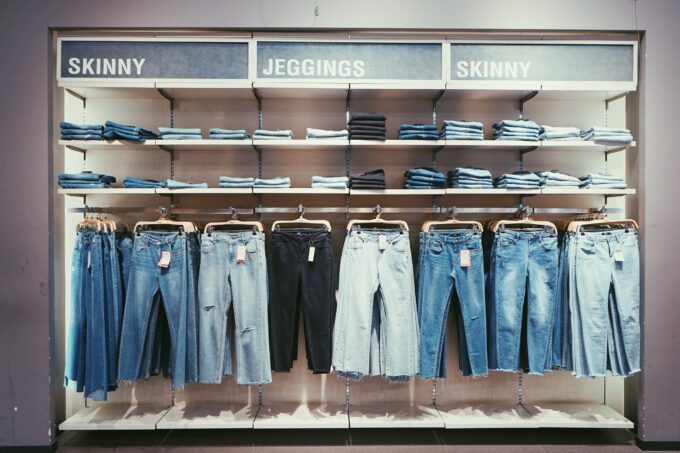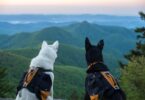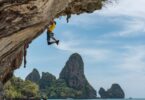The rainy season is probably the best time for camping and hiking since it’s not too hot and not too cold. But it’s also the season of unpredictability and uncertainty about the weather. It might be sunny during the day, but the temperature can get pretty down during nights, or one minute it’s super warm and the next minute it’s raining. So if you’re planning to camp out during this season, it’s best to be well-prepared for any change in weather.
It’s necessary to plan ahead and invest in rain gear to keep you dry and enjoy your outdoor trip. But before investing in rain gear, it’s best to do your research and get something that’s best suited for your comfort and style. Lightweight rain gear is your best bet since it’ll keep you dry and you won’t feel stuffed as well.
These are also easy to carry around whenever required, and you can always keep them packed when not needed. But you probably don’t know the kind of lightweight rain gear available in the market. Don’t worry, we’ve got you covered and provided a list of different types of lightweight rain gear to keep you dry during your outdoor trips.
1. Rain Jackets And Coats

Source: unsplash.com
The most common rain gear includes lightweight rain jackets and coats. They come in a variety of styles, design and comfort level. Rain jackets are extremely lightweight and some are also hooded. You should look for rain jackets featuring taped seams or durable water repellent finish for keeping you drier. If you are preparing for a trip you can find lightweight rain jackets on this blog post.
Raincoats are also another common rain gear, but you probably don’t know they come in a variety of options to choose from. There are Trench coats, for a rather stylish look. And these were made popular by the military, so you can bet on the quality. You can also get a reversible coat for double styling, more sober side for professional trips and the funky colourful side for a chill look. You can also choose a sporty raincoat if that’s more your style. Or you can also get a raincoat custom-made for your own style and comfort.
2. Poncho

Source: unsplash.com
Ponchos are another common rain gear that most people use. But instead of plastic or vinyl ponchos, which have higher chances of ripping while hiking. It’s advised to go for a nylon poncho, these are highly durable and lightweight.
Ponchos are best suited for people looking for reliability and comfort instead of style. And these are probably the most suitable option for rain while camping out in the wilderness. The only limitation of a Poncho is that it might not work in windy rains.
3. Hats

Source: unsplash.com
Rain hats are very underrated since many people think that hooded jackets and simple clothing would help cover their heads. But if you don’t want to get seriously ill due to wet hair and head for a long duration, it’s a good idea to get a hat suited for rain.
Hats can also keep water away from your face, and when your rain jacket hood becomes all drenched up, these will become your savior. Though the nylon ball caps usually worn under a hooded rain jacket can help keep the hood to stay in place and not fall in front of your face.
But a fully brimmed hat is a rather efficient choice for heavy rains. You can also get a brimmed hat with a chinstrap for fighting off the winds, so your hat doesn’t fall off. Opt for a wide-brimmed hat since it can give extra protection for keeping the water away from your face and your head dry.
4. Pants

Source: unsplash.com
Many people feel they don’t need a covering for their legs in rain, and that they could go with usual pants in rain. But that’s not true, to prevent hypothermia and to keep your lower body warm and dry, it’s good to get a pair of waterproof rain pants.
And if your rain jackets are short, just covering till your waist, these should be a must-have. In warmer weather, it’s alright to leave the pants, but wear them during colder weather. You can avoid wearing rain pants when your poncho or rain jackets are covering your knees to prevent excess bulking. Accordingly, you can rather opt for Gaiters or Rain boots that can cover your shins and lower legs.
5. Rain Boots And Gaiters

Source: unsplash.com
Rain boots are specially designed to be worn during rains, they are usually built with rubber or synthetics and are made unpadded. They’re produced to keep your feet dry and these are especially useful for kids since they have a tendency to jump in a puddle of water. For extra protection, you can also wear thick socks to keep your feet extra warm and dry.
But if you’re planning to use rain boots for hiking, it’s a better choice to opt for a good waterproof hiking boot instead. These are highly useful while trekking and hiking in the rain and they’re lightweight as well. These are designed with a gripped sole and usually have a waterproof sock already sewn into the boot. They’re constructed with breathable waterproof material so the moisture from your feet doesn’t trap inside your boots.
Additionally, as mentioned earlier, you can also choose Gaiters for covering your legs and boots to keep your feet and legs extra dry. Gaiters are the best option when you don’t want to add extra bulk to your legs since they’re lightweight and packable. And they also act as added water repellent to keep moisture away from your feet.
6. Trekking Umbrellas

Source: unsplash.com
Trekking umbrellas can cover a large area for keeping you dry and these are designed to fit into small spaces. They’re usually very lightweight and easy to carry with their straps.
But the biggest limitation of a trekking umbrella is that you’ll have to hold it with your hands and it might not be feasible while hiking on narrow trails. And these are also not very useful in windy rains.
7. Backpack Cover

Source: provizsports.com
The final rain gear is a pack cover, which will act as a waterproof cover for keeping your camping bag and other gear dry. This will ensure that your clothes, camping equipment, food and other essentials don’t get wet. And this should make your list of rain gears since the regular trekking bag is made of fabric that’s going to get soaked within minutes of rain.
So these were some of the most important, lightweight, easily carryable and packable rain gear which you can use while hiking and camping out. And it’s always a good practice to keep them handy if it’s the rainy season and you can’t anticipate the weather.







